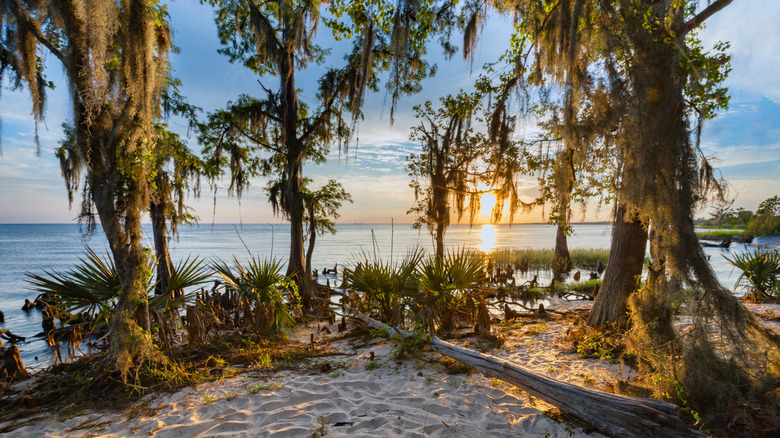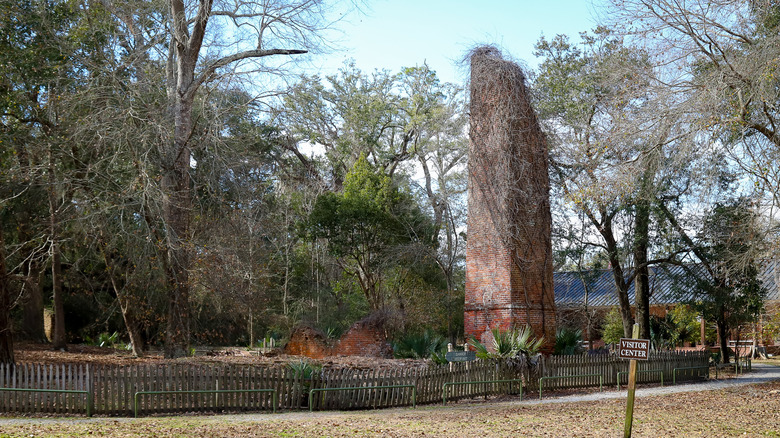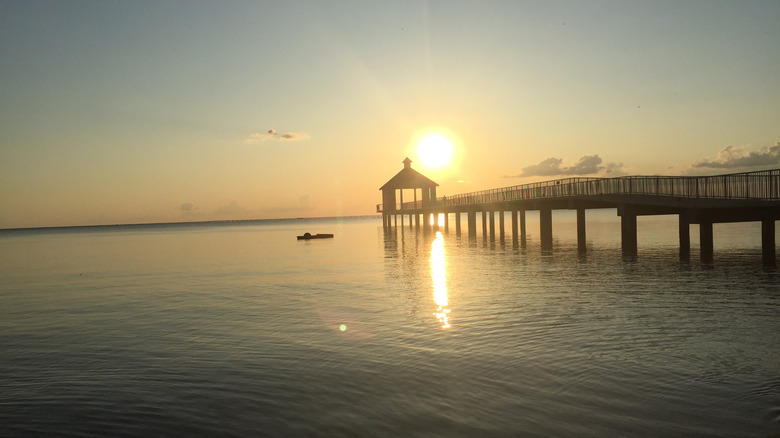Learn More About Southern US History With A Trip To This State Park
Imagine a Southern evening in Louisiana. There is Spanish moss hanging from the trees, a view of the sunset over Lake Pontchartrain, gentle breezes, and the sound of birds returning to their nests. About an hour from the city of New Orleans, near Mandeville on the north shore, is a beautiful park that has hiking, camping, fishing, and more, as well as hundreds of species of birds and animals to spot. This place is called Fontainebleau State Park, and it's a must-visit if you're in the area.
If you're an American history buff, this park has something more for you. On the grounds are the remains of a sugar mill from the 19th century, owned by a wealthy planter and senator. Not all of this history is pleasant, as you may assume from the last sentence. That means it's even more important to study and learn about. Let's take a look at what there is to discover at Fontainebleau State Park, what to do there, and some of the history you can experience while visiting.
History at Fontainebleau State Park
Fontainebleau State Park has lots of outdoor activities which we'll get to, but one thing history buffs won't want to miss is the ruins of the sugar mill once owned by Bernard de Marigny, who was a planter, land developer, and, sadly, owner of enslaved people at his plantation. He was also President of the Louisiana State Senate from 1822 to 1823. In fact, the park was only part of the lands he held. The ruins of the mill from 1829 are still there, and available to tour.
There is also a sign at the site that shows where the enslaved people who were forced to work there lived in 20 double cabins while the place was in operation from 1829-1862. They worked the sugar presses, the lumber mill, and the steam engines, as blacksmiths, brickmakers, shoemakers, and more. Even little children were forced to work. From an 1840 census, we know that there were at least 153 enslaved people on the plantation. You can stop by the visitors center to learn more about Marigny, and the history of the people who did the real work to keep his plantation running.
Fontainebleau was made into a state park in 1942. It was added to the National Register of Historic Places in 1999. The recent film "Where the Crawdads Sing," based on the 2018 novel by Delia Owens, was filmed at Fontainebleau State Park.
Ghostly doings in the park and other activites
There is a lot to do at the park outside of the ruins. You can visit the man-made beach, walk the lovely pier to watch the sun set in spectacular fashion, and go hiking on the 27-mile path called the Tammany Trace (which goes beyond the park) that was partially created from an old railway line. You can also go camping here. Do note that there was some damage from Hurricane Ida, so some of the cabins may still be closed. There are RV sites, the aforementioned cabins, and regular campsites for tents. For those with mobility issues, you can reserve an all-terrain wheelchair at the park for free, though the reservations must be made at least 48 hours in advance.
For those of you interested in haunted history, who have already done all the area ghost tours, there have been claims of lights at the old mill, and the sound of machinery at night. People have reported ghostly forms as well. We've passed spooky season for the year, but the park holds a hayride through the park around Halloween as well as other activities.


